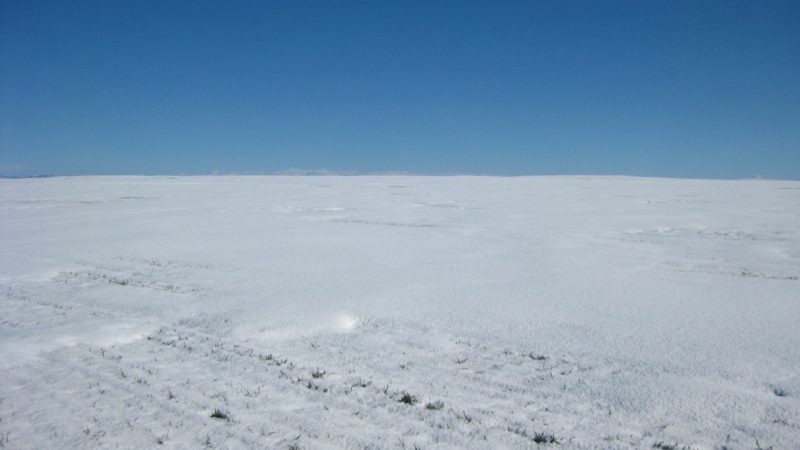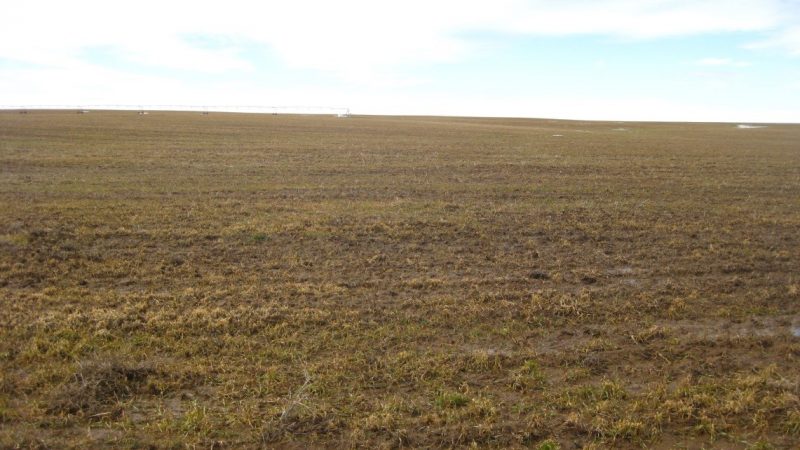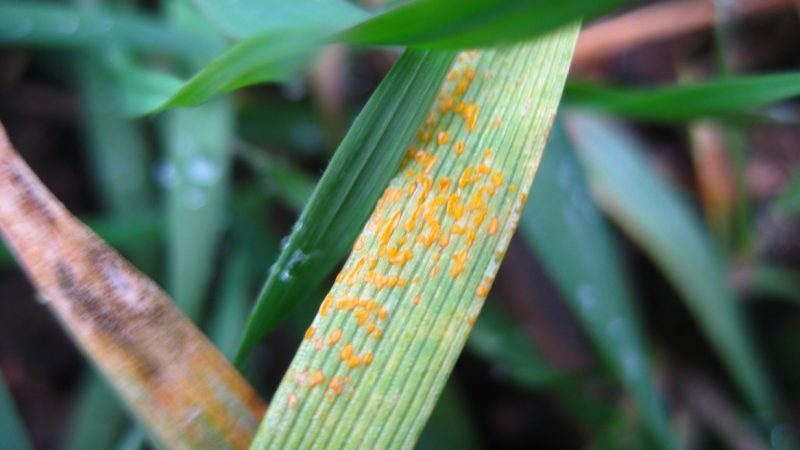Xianming Chen
Stripe rust will be likely severe in the eastern Pacific Northwest
Based on the forecast models using the temperature data from November 2016 to February 2017, stripe rust will potentially cause yield loss of 32% on highly susceptible varieties. This number is much higher than the 6% forecasted in January based only on the November-December weather conditions. The number is an average of the prediction range from 9% to 41% using six models. The models do not take snow cover in to account. Although there were several periods of temperature below the point (5oF) under which the stripe rust fungus could not survive, most areas were covered with snow, which helped the pathogen survival. Based on field observations (below), stripe rust fungus has survived the cold winter. Considering these factors, our current prediction is in the severe range between 40% and 60% yield loss on highly susceptible varieties and the most “susceptible” commercially grown varieties, such as Xerpha and Eltan, will likely to have up to 30% yield loss.
Stripe rust starts growing in the Walla Walla area
Different from the last year, spring is coming slowly. Much of the northern part of Washington is still under snow and last night about 3 to 6 inches of snow fell in the Palouse region. Yesterday, we were checking wheat fields in Whitman, Lincoln, Adams, and Walla Walla counties in Washington. Stripe rust infection that occurred before the winter was recognizable (as dead spots) in many fields in Lincoln and Adams counties, indicating widespread and severe infection in last fall as reported in last November. Most fields in Lincoln County were under snow cover (Figure 1). The lower leaves of big plants in early planted fields in Lincoln and Adams counties were dead and some fields had severe winter injure (Figure 2). Most stripe rust fungus in leaves from infection of last fall should be dead, but some should have been survived. We were able to found stripe rust pustules (Figure 3) in a field just south of Odessa along Highway 21 in Lincoln County, showing pathogen survival. Please keep in mind that even one pustule of stripe rust in a field grown with a susceptible cultivar in the early spring can cause epidemic in the growing season if later on the weather conditions are favorable to the disease.
In Adams and Walla Walla counties, wheat has turned fresh green and started growing. There were no or very little winter injure. We found active stripe rust pustules (producing spores) in a commercial field (Figure 4) and also in our experimental field near Walla Walla. This early appearance of stripe rust is similar to the situation last year.
Recommendations for the Pacific Northwest
As stripe rust has been found in Washington and is predicted to be severe, control of stripe rust is necessary. Some general recommendations for the eastern Pacific Northwest, similar to the recommendations made at this time last year, are the following:
- For winter wheat, check fields just before herbicide application. If a susceptible or moderately susceptible winter wheat variety (ratings 5 to 9 on the Buyers’ Guide) is planted, or you can found stripe rust in the field, consider using fungicide at the time of herbicide application.
- For spring wheat, consider planting resistant varieties. Use the Seed Buyers Guide to choose varieties rated 1 to 4 for stripe rust and avoid those rated 5-9 if possible.
- As there have been plenty moisture, which will last long into the late spring and early summer, the weather conditions will be favorable for stripe rust development. Second application may be needed around the flag leaf stage, depending upon the first time of fungicide application, rust re-development in the field, variety with high-level of high-temperature adult-plant resistance or not, and weather conditions. General recommendation for using second application or not will be made late as the season progresses and rust develops.
Stripe rust in other states
This year, stripe rust has been reported so far in Texas, Louisiana, Mississippi, Arkansas, North Carolina, and Washington. Stripe rust was first reported in Texas on February 9, not much later than the last year in January. The rust seems to be not as widespread as this time of the last year. However, stripe rust was widespread in wheat nurseries in northern Louisiana by the late February. Last week and this week, we received stripe rust samples from Mississippi and Arkansas, respectively. On March 2, stripe rust was reported in North Carolina. Based on the past experience, if stripe rust is found in Texas and Louisiana before March, the disease will likely develop into severe and widespread epidemic throughout the Great Plains and further into the east regions except when drought conditions occur. Application of fungicides is recommended for fields grown with susceptible varieties. Fungicide timing needs to be based on local recommendations.

Figure 1. Snow cover in a winter wheat field between Harrington and Davenport in the northern part of Lincoln County, WA as observed on March 8, 2017.

Figure 2. A wheat field in Lincoln County, WA showing severe winter injure (March 8, 2017).

Figure 3. Stripe rust pustules found in a winter wheat field near Odessa in Lincoln County, WA on March 8, 2017, indicating that the stripe rust fungus has survived the winter.

Figure 4. Active stripe rust pustules found in a commercial wheat field near Walla Walla, WA on March 8, 2017.